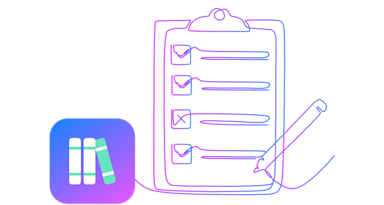When you read “merchant payment enablers,” who comes to mind?
Let's settle on a definition first. We'd define a “merchant payment enabler” as “an organization that provides the tools, infrastructure, and services necessary for businesses to accept, manage, and/or process payments on behalf of merchants.” Their common objective is simplifying payments so merchants can focus on their core business while ensuring a seamless, scalable, and secure payment experience for the end users. If you see “Merchant Service Providers,” this refers to the same set of companies.
The breadth of this definition indicates the many types of organizations that can be covered under it. Enablers can include Payment Service Providers (PSP), Payment Gateways, Acquirer Processors, Fintechs, Financial Institutions, Payment Facilitators (PayFacs), Financial Data Aggregators, Money Movement, Payment Orchestrators, Independent Sales Organizations/Independent Software Vendors (ISOs/ISVs), Wallet Providers, and more.
Foundations
For our purposes, let's select 4: ISOs/ISVs, PayFacs, Acquirer Processors, and Payment Gateways, but this Growth Guide can apply to any enabler we have listed here and others.
Let's set the stage with a quick list of explanations:
Independent Sales Organizations/Independent Software Vendors (ISOs/ISVs)
ISOs/ISVs help businesses set up the necessary infrastructure to accept credit and debit card payments and often provide customer support, billing services, and account management for merchants. They do not process payments themselves but act as a middleman between the merchant, and the payment processor or acquiring bank with a pre-configured processing solution.
Payment Facilitators (PayFacs)
PayFacs provide a shared infrastructure, enabling quick and easy onboarding of small merchants to accept payments. Instead of each business needing its own merchant account with an acquiring bank, PayFacs enable these businesses to operate as sub-merchants to aggregate and process payments under the PayFacs' master merchant account.
Acquirer Processors
Acquirer Processors process card payments for merchants on behalf of acquiring banks by linking the merchant, the card network (like Visa or Mastercard), and the acquiring bank. They provide the technology and infrastructure to process payment transactions for acquiring banks.
Payment Gateways
A Payment Gateway enables businesses to accept online and in-person payments. It is the front-end technology platform that securely captures, encrypts, and transmits customer payment data from merchants and sends it to the acquiring banks and/or processors when a purchase is made. Payment gateways often offer additional services such as data collection, analysis, reporting, and fraud management with advanced security measures.
Here and here are a couple more valuable lists of definitions of payment industry terms.
Enabling Merchant Success
When enablers best position their merchant customers for business growth and efficiency, they position themselves for blockbuster growth. This includes enabling merchants to enter the market faster, achieve flexibility in adding new payment methods, and streamline their operations while safeguarding their reputation by keeping their data safe.
As we saw earlier, merchant enablers play diverse roles across the payment ecosystem. Still, they share many ways to make the payment process more straightforward and optimal for their merchants while adding more convenience, security, and improved experiences for end-users.
1
More Payment Choices and Continuous Innovation
One way enablers innovate is by adding new experiences. These could include new payment options like digital wallets (like Apple Pay and Google Pay), Pay by Bank, Buy Now Pay Later (BNPL), and Click To Pay, as well as additional features like one-click payments, or mobile optimization. For at least 70% of end users, the availability of their preferred payment method is a significant factor in their store choice. 9 of 10 Americans now use digital payments, while digital wallets account for 49% of global online sales. The desire for innovation to best serve evolving payment preferences is evergreen. Happier end users buy more and again, which benefits the merchant and, ultimately, the enabler.
2
Data Protection and Security
As merchants grow, their data protection and security needs grow with them. 48% of end users have abandoned a transaction because the website seemed insecure, while 45% left because they worried about how the brand would use their PII (Personally Identifiable Information) like name, contact information, and address. Secure payment transactions were considered the most important in making a purchase. The best enablers try to stay ahead of these needs by incorporating the latest encryption and tokenization technologies and implementing fraud detection and prevention measures, such as 3D Secure (3DS), two-factor authentication (2FA), and real-time transaction monitoring. Especially in the case of payment gateways, a reputation for quality and security can make the difference between an abandoned cart and a completed purchase.
3
Reliable Payments and Optimized Experiences
As an enabler working with a merchant knows, minimizing friction in a payment transaction is critical to the merchant's reputation and end-user experience. We have all seen stats about high cart abandonment rates ranging from 60-80%. At least 22% can be attributed to complex checkout processes, with the possibility of gaining 35% more conversion for checkout done right. But checkout isn't the whole story. The underlying payment infrastructure has to perform too. This leads enablers to prioritize offering products with the best latency, reliability, and UI/UX to maximize the potential for transaction success. Sites with higher availability in their payment systems can see a conversion rate increase from 3%-5% compared to those with frequent issues or downtime.
4
Global Accessibility
I have lived on multiple continents and am well aware of the vagaries of exchange rates. As a result of my moves, I also have sellers around the world from which I purchase (my favorite chocolates are shipped from Ireland). Since I am currently based in the US, I prefer to purchase in USD. 92% of shoppers agree with me and also prefer to purchase on sites that price in their local currency. 49% of shoppers would abandon purchases if they couldn't use their local payment option. Local Payment Methods (LPMs) differ widely worldwide. Alipay is the most popular mobile payment platform in China, Paytm and PhonePe digital wallets in India and Pix bank transfer payments in Brazil are just three examples.
If a merchant wants to expand to new markets across borders, an enabler that can quickly support offering local currencies and payment methods will win their business. By 2028, LPMs are expected to account for more than half of the value of all e-commerce transactions globally, at 58%. Most merchants want to spend more time adapting their products to local tastes than ensuring they can accept region-specific payment methods.
5
A Reputation for Trust and Service
Merchant enablers like Stripe, Paypal, Shopify, Square, and others offer various services to create transparency and build trust with their merchants. These include business reporting tools on sales, disputes, refunds, and fees, data analytics to understand sales patterns and payment effectiveness better, and fraud analytics to track, analyze, and combat fraud and risk. Given the critical nature of payment systems, merchant enablers usually offer round-the-clock customer support to assist with technical issues and minimize downtime. Enablers are also a source of information via events and webinars, technical documentation, and personalized support on the latest strategies and products for merchants to improve payment performance, optimize integrations, and maximize security.
Delivering on the Promise: Build, Buy or Partner
Your merchant expects everything we listed above, but equally, it isn't easy to deliver. If you are focused on optimizing the one-click checkout experience, can you pay as much attention to the latest data security trends? When you offer Click to Pay in a new country, how can you ensure you are also focused on collecting the richest customer insights to spur future growth? And, when you are strengthening your orchestration offering, can you simultaneously offer the most up-to-date card information?
That said, any customer, including a merchant, prefers the convenience of a one-stop shop. Fewer vendors mean simplified operations in the form of fewer contracts and integrations. Cost efficiency is achieved through bundling, reduced administrative costs, streamlined billing, and consolidation in servicing and support. Purchasing from a single vendor and their vetted partners also means building on an existing relationship and trust while receiving a consistent standard of reliability and quality.
You can meet your merchants' expectations for their payment services in one of three ways: buy other companies that offer the services you need, build out your own, or partner with other providers that can fill any gaps in your offering.
If you choose the acquisition route, the process can be expensive, time-consuming and still fraught with the risk of failure. Building is another option, but is resource-intensive, requires in-house expertise or specialized consultants, and may take attention away from your core competencies. As part of our approach to growth, we believe a technologically superior payment stack benefits from the best-of-breed across all its components. Strategic partnerships between leaders in the space, which are thoughtfully built and consistently nurtured, can achieve this.
Building a Path to Success
In our work with merchants and enablers across industries, functions, and sizes, we have consistently observed a few key factors that the most successful ones prioritize.
- Neutrality—Too often, merchants and enablers can be hobbled by partial solutions, such as a processor with geographic limitations, a gateway that doesn't offer all the required payment methods, or payment performance products that only work with a specific network or with the offering PSP. Merchants looking to grow, and have their enabler support their growth, know that the most effective payment setup is one that works across networks, processors, PSPs, enablers, and more.
- Modularity—Prebuilt packages have their place and can work well for some merchants. But you may be selling to merchants in customer growth mode, plan to expand their payment options and regions, or are looking to build on their payment setup rather than start from scratch. In such cases, a modular offering where they can pick and choose what they need and customize their payment package to their needs will be more desirable.
For instance, we work with merchants who want to establish a Token Vault to descope themselves from PCI compliance. They may also want to reduce processing costs, improve the end-user card payment experience, and get additional insights on cards based on the BIN and PAN. So they add on products like Network Tokens, Account Updater, and Card Attributes. But, if they already have a vault and want to optimize their payments, our infrastructure lets them select any or all of these individually. - Payments Expertise—The payment industry is a constantly evolving space. A few recent developments capturing interest include biometric payments, Pay By Bank (A2A payments), more cross-border and cross-currency instant B2B payments, emerging use cases for AI to improve payment effectiveness, and the upcoming PCI DSS v4.0 implementation deadline. It's challenging to keep on top of all of these in addition to the critical needs of the core business. The most successful players partner with industry experts closely connected within the ecosystem to ensure their payment stack is and continues to be finely tuned for growth.
- Cost Efficiency—Businesses spend $2.7 trillion per year on manual payment processes and, on average, pay $12 for each rejected or repaired payment. As children, we learn that a penny saved is a penny earned. Applying this to a company for their payment costs means trying to minimize chargebacks, getting multiple PSP quotes, and comparing processors to make a dent in the typical 2-3% payment processing fees (although switching processors isn't easy when you don't have data ownership). Even as the pandemic upheaval is receding and cautious hope is on the horizon, the most successful companies continually prioritize cost efficiency to benefit their balance sheet, employees, customers, and partners.
- Customer Experience—We saw above that a poor checkout experience can impact conversion by as much as 35%. But sometimes, it isn't the checkout but the card that is the problem. A rule of thumb is that 40% of cards are replaced yearly - expiration, routine wear and tear, damage, marketing programs, observed fraud, and new security features all contribute to this. That's a lot of cards not working at the store and online and frustrating the customer with a “Payment Declined” message. Savvy merchants and their enablers head this off with a product like Account Updater to keep their users' card credentials current - which means successful purchases and a higher probability of a repeat performance. This can mean a significant bottom-line impact when a mere 5% increase in customer retention can lead to a profit increase of 25% to 95%.
As a side note - I was just this user when an annual subscription wasn't renewed since my card was recently replaced. In the time that it took me to read the “Action Required: Your subscription cannot be processed due to a failed payment” email, find my physical card, remember my credentials to log in to the site I hadn't in over a year, and then manually type in my card details, my impression of the consumer software company as a modern tech-forward player had definitely gone down a few notches. I may not be as keen to renew again.
Strengthening your Merchant Offering
When our enabler partners work with their merchants, they prioritize innovation. They also help facilitate business growth and operational scalability, support consolidation, and maximize data security for their merchant customers.
Their merchants benefit from VGS included as a white-label product through:
- Data Security and Centralization—As a neutral third-party token vault that stores PII, PCI, and other sensitive data, VGS enables merchants to secure and centralize their data in a vault they own and send it to any PSP or processor without needing individual integrations while descoping themselves from PCI compliance.
- Faster Time to Market—VGS offers multiple network-agnostic products to improve payment performance across card networks and payment methods: Network Tokens, Account Updaters, and Card Attributes. Besides the cost efficiency of not needing to purchases these from multiple PSPs, your merchants benefit from working with a single provider.
- Working with Best in Class—VGS is one of the only providers directly integrated with the networks, optimizing costs and minimizing latency. Our products offer significant impact drivers like support for multiple use cases (COF, MIT/CIT, Subscriptions), individual sub-TRIDs, and direct network API-based integration instead of outdated file-based methods.
The enabler partners we work with have a strong merchant offering. Adding VGS elevates their growth and adds new opportunities. Learn more here.




